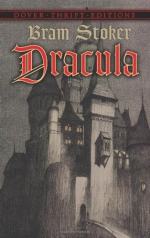|
This section contains 5,426 words (approx. 19 pages at 300 words per page) |

|
SOURCE: Seed, David. “The Narrative Method of Dracula.” Nineteenth-Century Fiction 40, no. 1 (June 1985): 61-75.
In the following essay, Seed provides a stylistic analysis of Dracula.
When Bram Stoker's Dracula first appeared in 1897, it was greeted with a chorus of acclaim for its power from the reviewers. One dissenting voice was that of the Athenaeum, which charged the novel with structural weakness:
Dracula is highly sensational, but it is wanting in the constructive art as well as in the higher literary sense. It reads at times like a mere series of grotesquely incredible events; but there are better moments that show more power.1
This aloof dismissal seems to have established a consensus attitude toward the novel that has met with an almost complete critical silence. Only of recent years have critics begun to examine its methods, and even now all too little attention is paid to its formal complexities.
The...
|
This section contains 5,426 words (approx. 19 pages at 300 words per page) |

|


